Since Amazon Flex’s emergence in 2016, the gig economy has become a popular way for individuals to earn extra income with flexible hours. Amazon Flex is an on-demand delivery service that encourages customers to use their vehicles and earn up to $25 an hour.
Introduction
Amazon Flex has proven to be successful, with more and more individuals joining the growing trend in the gig economy to make extra income. However, Amazon Flex may not be the best option for some couriers, so this article will introduce 10 alternative apps to Amazon Flex, each catering to different needs. This article introduces the 10 best alternative apps to Amazon Flex, including Instacart, UberEats, Postmates, DoorDash, Roadie, SnagAJob, TaskRabbit, GoFor, Dolly, and Flexe.
A list of Top Independent Contractors’ Apps like Amazon Flex
Top Apps like Amazon Flex
DoorDash
DoorDash, a leading on-demand food delivery app, is a top alternative to Amazon Flex for independent contractors seeking flexibility and competitive pay. In this brief evaluation, we’ll discuss DoorDash’s unique features, benefits, and drawbacks, making it a great choice for those looking for food delivery gigs.
Key Features:
- Expansive Network: DoorDash offers a wide variety of food options through its extensive restaurant partnerships, ensuring a steady stream of delivery orders for drivers.
- Competitive Pay: DoorDash drivers can potentially earn more than drivers on other food delivery apps, thanks to a combination of base pay, promotions, and tips.
- Flexibility: DoorDash offers a flexible work schedule, allowing drivers to choose when and where they want to work, similar to Amazon Flex.
Drawbacks:
Despite the many advantages, DoorDash also has some drawbacks, such as market saturation, which can lead to fewer available orders and reduced earnings potential. Additionally, using your personal vehicle for DoorDash deliveries can result in increased maintenance costs and potential depreciation in value.
 | 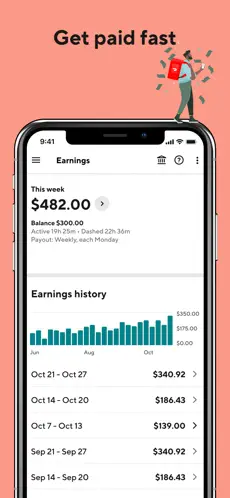 |  | 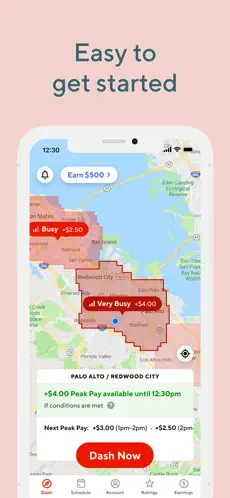 | 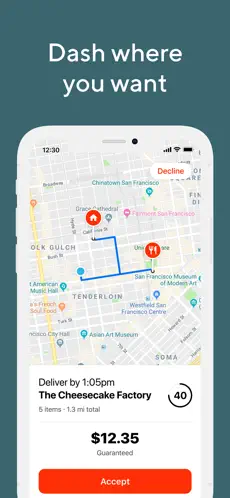 |
For independent contractors seeking a flexible and potentially lucrative alternative to Amazon Flex, DoorDash stands out as a top choice in the food delivery industry. With its unique features and benefits, DoorDash is a popular option for those looking to enter the gig economy, though it’s essential to weigh the drawbacks before diving in.
Postmates
Postmates, a well-known on-demand delivery app, presents itself as a strong alternative to Amazon Flex for independent contractors looking for flexibility and diverse delivery options. In this brief evaluation, we’ll delve into Postmates’ unique features and potential drawbacks, providing insight for those interested in delivery service gigs.
Key Features:
- Diverse Deliveries: Unlike other apps focused solely on food delivery, Postmates allows drivers to deliver a variety of items, from meals to retail goods, providing a more diverse work experience.
- Flexible Schedule: Postmates offers drivers the freedom to choose when and where they want to work, mirroring the flexibility found in Amazon Flex.
- Blitz Pricing: During peak hours, Postmates introduces Blitz Pricing, allowing drivers to earn more than the usual rate for their deliveries.
Drawbacks:
Despite its strengths, Postmates also comes with a few drawbacks. Market saturation can lead to fewer available orders and a potential reduction in earnings. Additionally, the wear and tear on personal vehicles for delivery purposes may lead to increased maintenance costs and potential depreciation in value.
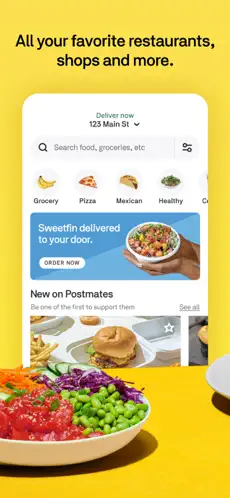 |  | 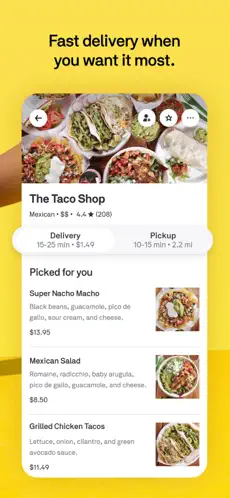 |  |  |
Postmates emerges as a solid choice in the delivery industry. With its unique features, such as diverse deliveries and blitz pricing, Postmates provides an exciting option for those looking to join the gig economy. However, potential drawbacks should also be considered before getting started.
Uber Eats
Uber Eats, renowned for its on-demand food delivery services, is gaining momentum as a competitive alternative to Amazon Flex. This concise evaluation covers Uber Eats’ distinguishing features along with potential challenges to consider for gig workers interested in the food delivery domain.
Key Features:
- Global Reach: Uber Eats’ extensive global presence offers drivers abundant opportunities in numerous cities worldwide, enhancing their potential to secure delivery orders.
- Surge Pricing: During busy periods, Uber Eats applies surge pricing, providing drivers the chance to boost their earnings beyond standard rates.
- Integration with Uber: Drivers can seamlessly switch between Uber Eats and Uber rideshare services, diversifying their income streams.
Drawbacks:
While Uber Eats has robust features, certain challenges can arise. High competition among drivers in populated areas might reduce the availability of orders, potentially affecting earnings. Moreover, frequent use of personal vehicles for deliveries could result in additional maintenance expenses and potential devaluation over time.
 | 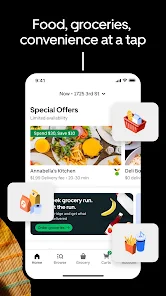 | 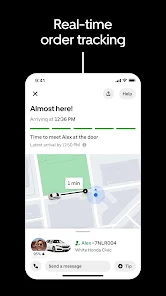 |  |  |
Uber Eats stands out as a dynamic alternative to Amazon Flex for independent contractors keen on diversifying their gig opportunities within the food delivery landscape. Its global reach, surge pricing, and integration with Uber rideshare services make it an attractive option. Nevertheless, it’s crucial for gig workers to be mindful of potential challenges before embarking on their Uber Eats journey.
Grubhub
Grubhub, a well-respected player in the on-demand food delivery sector, is surfacing as an intriguing alternative to Amazon Flex for gig workers. This succinct evaluation explores Grubhub’s standout features along with potential drawbacks, providing a comprehensive picture for contractors eyeing the food delivery market.
Key Features:
- Wide Restaurant Selection: Grubhub’s impressive array of partnered restaurants provides drivers with a steady flow of delivery orders, enhancing their earning opportunities.
- Scheduled Shifts: Unlike other apps, Grubhub allows drivers to schedule shifts in advance, ensuring a predictable work schedule and potential earnings.
- Perks Program: Grubhub’s unique Perks Program offers exclusive deals and discounts to its users, which can attract more customers and in turn, create more delivery opportunities for drivers.
Drawbacks:
Despite its appealing features, Grubhub isn’t without challenges. The app’s popularity can lead to a high driver-to-order ratio in certain areas, possibly limiting available deliveries. Furthermore, regular use of personal vehicles for deliveries may result in increased maintenance costs and vehicle value depreciation.
 | 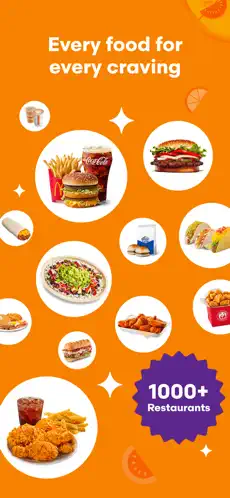 | 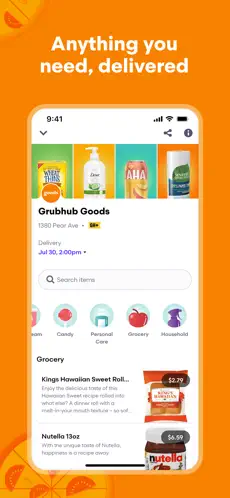 | 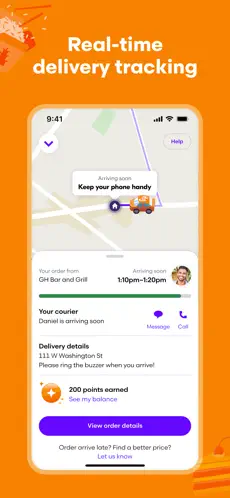 |  |
Grubhub manifests as a compelling alternative to Amazon Flex for independent contractors seeking to delve into the food delivery sector. Its unique offerings like scheduled shifts and the Perks Program, coupled with a vast network of restaurant partnerships, make it an attractive platform. However, potential drawbacks must be taken into account before opting for Grubhub as a preferred gig platform.
Instacart
Instacart, renowned for its on-demand grocery delivery services, is making strides as a compelling alternative to Amazon Flex for gig workers. In this succinct analysis, we delve into the distinguishing features and potential challenges of choosing Instacart for those eager to venture into the grocery delivery domain.
Key Features:
- Grocery Focus: Instacart’s focus on grocery delivery provides a unique niche for drivers, differing from traditional food delivery apps.
- Shop and Deliver: Instacart offers two roles for gig workers: full-service shoppers who shop and deliver, and in-store shoppers who prepare orders within the store.
- Earning Potential: Instacart shoppers can boost their earnings through tips and batch incentives, offering a competitive income compared to other gig platforms.
Drawbacks:
While Instacart presents a unique opportunity, it also brings its own set of challenges. The physical demands of grocery shopping and delivery may not suit everyone. Additionally, the order availability can fluctuate based on customer demand and the number of active shoppers, potentially affecting earnings. Regular use of personal vehicles for delivery may also result in increased maintenance costs and potential depreciation.
 |  |  |  |  |
For independent contractors seeking a unique alternative to Amazon Flex in the grocery delivery sector, Instacart emerges as a worthy contender. With its grocery-focused service and varied roles, Instacart provides a distinctive avenue in the gig economy. However, considering the potential challenges is crucial before committing to the Instacart platform.
Shipt
Shipt, known for its swift and efficient grocery delivery service, is gaining traction as an appealing substitute for Amazon Flex among gig workers. This concise appraisal presents Shipt’s salient features along with potential challenges, offering a well-rounded perspective for those interested in the grocery delivery sector.
Key Features:
- Shop from Multiple Stores: Shipt’s partnership with a variety of retail stores allows shoppers to fulfill orders from multiple locations, enhancing variety and increasing job opportunities.
- Flexible Scheduling: Shipt offers the ability to schedule work hours in advance, providing predictability for independent contractors.
- Tip Inclusion: With Shipt, shoppers can receive tips directly through the app, increasing the overall earning potential.
Drawbacks:
While Shipt’s features are appealing, it’s important to acknowledge potential challenges. The availability of orders can fluctuate, largely depending on customer demand and the density of active shoppers in an area, which can affect earnings. Similarly to other delivery roles, frequent use of personal vehicles can lead to increased maintenance costs and potential depreciation.
 | 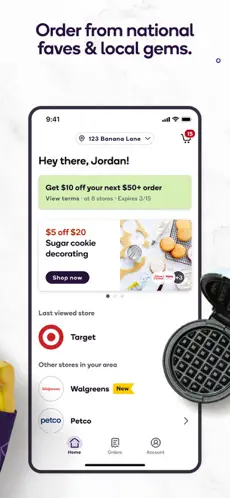 | 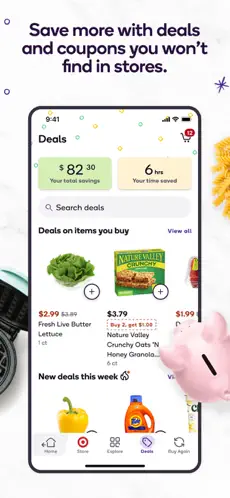 |  |  |
Shipt presents itself as a solid choice for independent contractors seeking an alternative to Amazon Flex in the grocery delivery industry. Its partnerships with multiple stores, flexible scheduling, and tip inclusion make it an attractive platform. However, weighing potential challenges before deciding to embark on a journey with Shipt is essential.
GoShare
GoShare, a unique on-demand moving and delivery service, is carving out a niche as an intriguing alternative to Amazon Flex for gig workers. This concise overview shines a light on GoShare’s standout features and potential challenges, providing a holistic view for those exploring opportunities in the moving and delivery space.
Key Features:
- Moving and Delivery Focus: GoShare provides services beyond traditional parcel delivery, including moving assistance and large item delivery, offering a varied work experience for drivers.
- Higher Earnings: Given the nature of the services, GoShare jobs often pay more than standard delivery roles, leading to higher earning potential.
- Vehicle Versatility: GoShare offers opportunities for drivers with different types of vehicles, from cars and pickup trucks to vans and box trucks.
Drawbacks:
Despite its unique proposition, GoShare also has its share of challenges. The physical demands of moving jobs may not be suitable for everyone. Additionally, job availability may vary based on location and customer demand, potentially affecting consistent earnings. As with other delivery roles, frequent use of personal vehicles can lead to increased maintenance costs and potential depreciation.
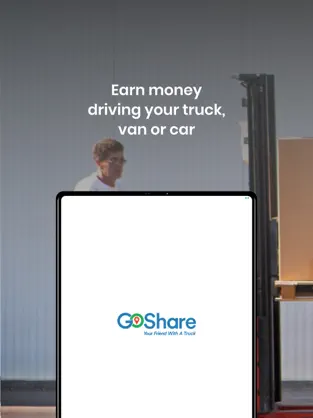 | 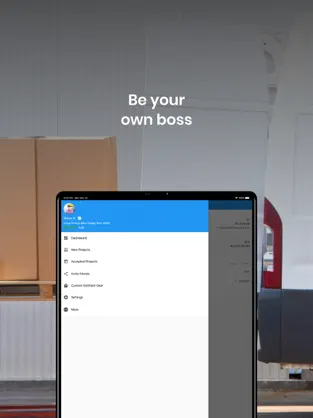 | 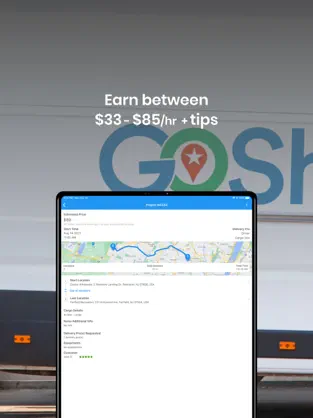 | 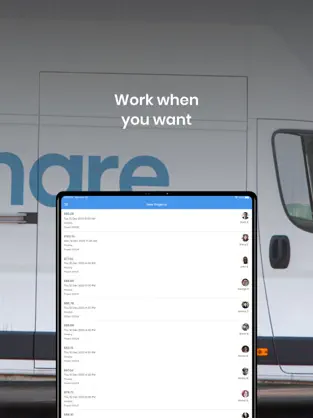 | 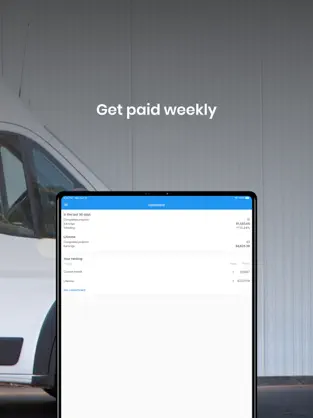 |
For independent contractors seeking a novel and potentially lucrative alternative to Amazon Flex, GoShare stands out in the moving and delivery sector. Its unique focus, higher earnings, and vehicle versatility make it an enticing option. However, the physical demands and fluctuating job availability are important considerations before signing up with GoShare.
Rover
Rover, a leading platform for pet care services, is marking its territory as an exciting alternative to Amazon Flex for gig workers. In this concise analysis, we’ll examine Rover’s distinct features and potential challenges, providing a comprehensive view for those contemplating a career in pet care services.
Key Features:
- Pet-Centric Services: Rover’s focus on pet care services, such as dog walking, pet sitting, and boarding, offers a unique and rewarding work experience for animal lovers.
- Flexible Opportunities: With Rover, independent contractors can choose the services they wish to offer, their rates, and their work schedule, offering a high degree of flexibility.
- Earning Potential: Due to the personal and sometimes extended nature of pet care, Rover jobs can often yield higher earnings compared to standard delivery roles.
Drawbacks:
While Rover’s unique focus on pet care offers a fresh alternative, there are potential challenges. The demand for services can fluctuate based on location, time of year, and the number of active caregivers in your area, affecting consistent earnings. Additionally, being responsible for other people’s pets can entail potential liabilities and challenges that don’t exist in traditional delivery roles.
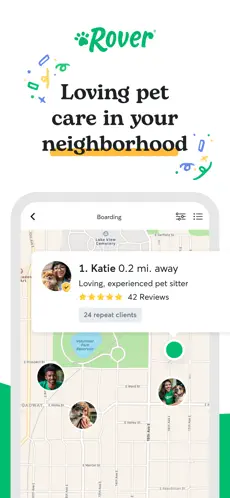 |  |  |  | 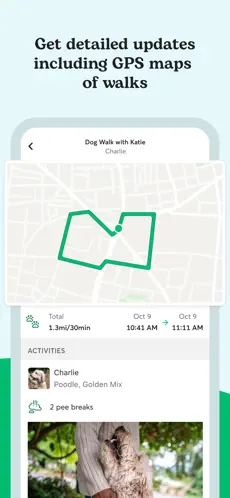 |
For independent contractors seeking a unique and rewarding alternative to Amazon Flex, Rover offers a compelling opportunity in the pet care industry. Its focus on pet-centric services and flexibility in job selection make it a heartwarming choice. However, the variability in demand and potential liabilities are crucial considerations before embarking on a pet care journey with Rover.
Turo
Turo, a pioneering platform in the peer-to-peer car rental industry, is driving its way as a unique alternative to Amazon Flex for gig workers. This brief exploration delves into Turo’s distinguishing features and potential hurdles, providing a rounded perspective for those intrigued by opportunities in the car rental market.
Key Features:
- Peer-to-Peer Car Rental: Turo allows car owners to rent out their vehicles, offering a unique opportunity to earn money without the physical demands of delivery services.
- Flexible Pricing: With Turo, independent contractors can set their rental prices, providing control over potential earnings.
- Wide User Base: Turo’s large user base can help ensure a steady stream of potential renters, enhancing the chance for consistent earnings.
Drawbacks:
While Turo presents an innovative earning opportunity, it’s important to consider potential challenges. Car wear and tear, along with increased maintenance costs, can be factors. Additionally, dealing with potential damage and insurance issues can be complex. Availability of rentals can also fluctuate based on location, season, and the type of vehicle being rented.
 |  | 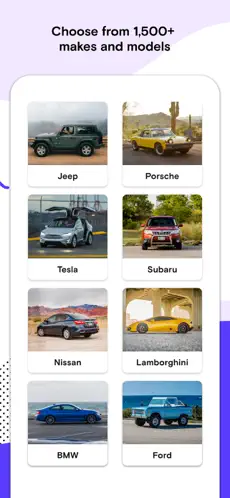 |  |  |
For independent contractors seeking a novel alternative to Amazon Flex, Turo emerges as a standout choice in the peer-to-peer car rental industry. Its unique business model, flexible pricing, and wide user base make it an attractive platform. However, potential challenges like maintenance costs and insurance complexities are crucial to weigh before deciding to list a vehicle on Turo.
Tasker
Tasker, a prominent platform in the gig economy for task-based services, is emerging as a versatile alternative to Amazon Flex for independent contractors. This concise review dives into TaskRabbit’s salient features and potential challenges, offering a comprehensive view for those drawn to the task-based service market.
Key Features:
- Variety of Tasks: Tasker offers a broad range of task categories, from handyman services to personal assistance, providing a diverse work experience for Taskers.
- Set Your Rates: Tasker allows independent contractors to set their rates for services they offer, giving control over potential earnings.
- Reliable Customer Base: Tasker’s established platform and large customer base can ensure a consistent stream of potential jobs.
Drawbacks:
While Tasker’s diverse task offerings are appealing, potential challenges exist. The demand for certain services can vary based on location and season, possibly affecting consistent earnings. Additionally, some tasks may require specific skills or tools that not all contractors possess.
 |  |  |  |  |
For independent contractors seeking a flexible and varied alternative to Amazon Flex, TaskRabbit stands out in the task-based service industry. Its wide range of task categories and the ability to set your own rates make it an attractive platform. However, potential challenges like fluctuating demand and skill requirements should be considered before signing up as a Tasker.
We hope this comprehensive guide has given you valuable insights into the diverse range of opportunities available in the gig economy. Now that you have a better understanding of the top alternatives to Amazon Flex, you’re equipped to choose the platform that best suits your needs and preferences.
Remember, each platform has its own unique features and potential challenges, so take the time to consider which one aligns best with your lifestyle, skills, and financial goals. Whether you’re passionate about pet care, handy with tools, or love driving and delivering, there’s a platform for you.
Have you used any of these apps? Do you have any experiences or insights to share? We’d love to hear from you! Leave a comment below sharing your thoughts, experiences, and recommendations. If you found this guide helpful, please consider sharing it with others who might benefit. Your input and support can help us continue to provide valuable resources for independent contractors navigating the gig economy. Happy gigging!
Still have questions? Contact us.



